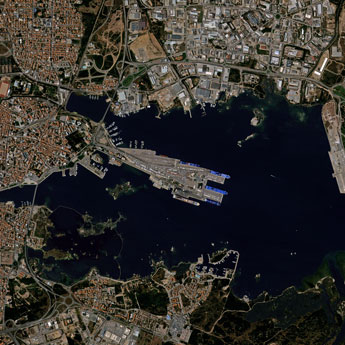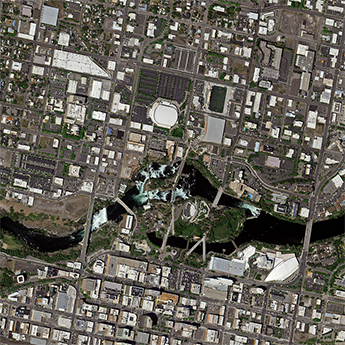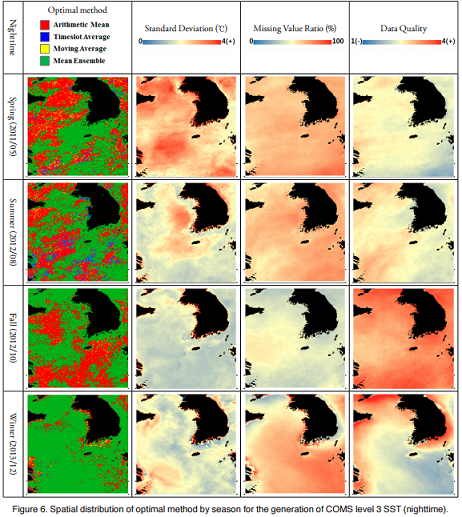활용사례
| 제목 | 천리안위성 해수면온도 3차산출물 생성기법 비교연구 | ||
|---|---|---|---|
| 국/내외 | 국내 | 작성일 | 2017-02-10 |
|
The COMS (Communication, Ocean and Meteorological Satellite) has been used in numerical weather prediction and meteorological monitoring over East Asia and Oceania since it has been launched in 2010. For more active utilization in climate research, the COMS level 3 products should be available in appropriate spatial and temporal resolutions. We compared different methods to generate monthly sea surface temperature (SST) products from the COMS time-series data. We employed three techniques for aggregating the time series, which are arithmetic mean, timeslot average, and moving average, and also used mean ensemble of them. Each level 3 dataset around South Korea was compared with monthly SST product from the Moderate Resolution Imaging Spectroradiometer (MODIS) of Aqua satellite during April 2011-March 2014. The timeslot average showed better root mean squared difference (RMSD) during the initial operational period of the COMS, when the retrieved values could be somewhat unstable. Daytime aggregations were derived more accurately by using the arithmetic mean or moving average, and the accuracy of nighttime aggregation was improved by the mean ensemble. Also, the timeslot average presented reasonable results particularly for coastlines where the standard deviation and missing value ratio were greater than normal. Because an optimal aggregation technique was variable depending on spatial and temporal conditions, we should be careful in selecting appropriate method for generation of the COMS level 3 products according to research objectives. |
|||
| 출처 | 기후연구 | ||
| 이전글 | Satellite-Based Damage Assessment of Cultural Heritage Sites |
|---|---|
| 다음글 | 아시아-오세아니아 지역의 MODIS 지면피복분류 개선 |
최신위성영상
-
 스페인:마드리드 왕궁(2025-05-29)
스페인:마드리드 왕궁(2025-05-29)2025-06-23
-
 이탈리아:Porto di Olbia(2025-05-25)
이탈리아:Porto di Olbia(2025-05-25)2025-06-09
-
 미국:Spokane Falls(2025-05-24)
미국:Spokane Falls(2025-05-24)2025-06-09
연관활용사례
-
아리랑 5호 위성 영상에서 수...
토양
2024-09-03
-
천리안위성 2A호 지구정지...
지리
2024-08-13
-
천리안위성 2A호 지구정지궤도...
지리
2024-07-22
연관미디어
-
과기정통부
과기정통부·기상청, ‘천...
2021-10-20
-
항우연
10년여 대장정의 결실,...
2020-11-19

네팔:지진(2015-05-05)
| 카테고리 | 재난재해 |
|---|---|
| 위성정보 | KOMPSAT-3 |
| 생성일 | 2015-03-24 |
세부정보
| ProductID | K3_20150505073608_15817_06161210 |
|---|---|
| 국가(영문) | Nepal |
| 국가 | 네팔 |
| 지역 | Pokhara |
| 레벨 | 1R |


